The debate between natural grass and artificial turf has been ongoing for decades, but in the past ten years, there has been a notable shift toward favoring real grass. Despite the differences in cost, discover why natural grass is experiencing a significant resurgence in popularity for outdoor field sports.
Table of Contents
ToggleWhy Real Grass Turf is Returning
Early Adoption of Astroturf
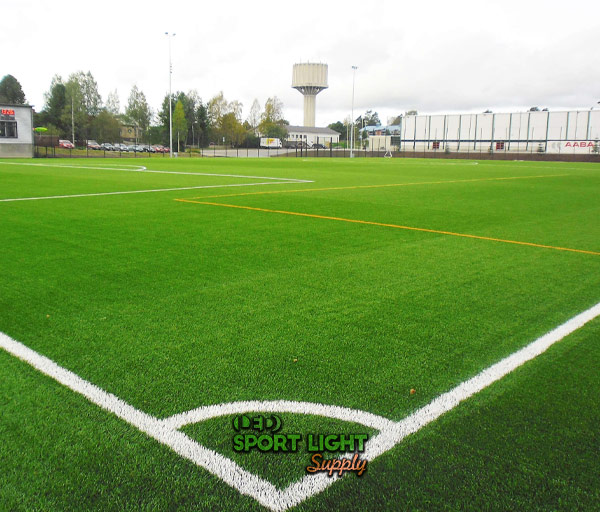
Astroturf was first introduced in 1969 at the University of Pennsylvania’s outdoor stadium. The Houston Astrodome, an indoor stadium, was among the first to use Astroturf due to its unsuitability for natural grass. Throughout the 1970s, Astroturf gained popularity, particularly for field hockey. However, it faced criticism for other sports such as football, baseball, and soccer, where the unpredictable bounce of the ball and increased player injuries due to the hard surface were major concerns.
Improvements and FIFA Standards
By the early 2000s, Astroturf began incorporating rubber and sand fillers to better mimic the cushioning effect of natural grass, addressing some of the earlier issues. In 2001, FIFA introduced their Quality Concept for artificial turf, setting standards for player safety and performance. Despite these advancements, a growing appreciation for natural grass emerged due to improvements in grass varieties through cross-breeding.
The Revival of Natural Grass
Natural grass is experiencing a resurgence in popularity, driven by advancements in turf management and the desire for a more authentic playing experience. Although real grass requires higher maintenance costs compared to artificial turf, its benefits, including improved player safety and performance, have made it a preferred choice for many sports facilities.
The renewed interest in natural grass reflects a broader trend towards enhancing the quality and safety of sports environments, providing athletes with the best possible playing conditions.
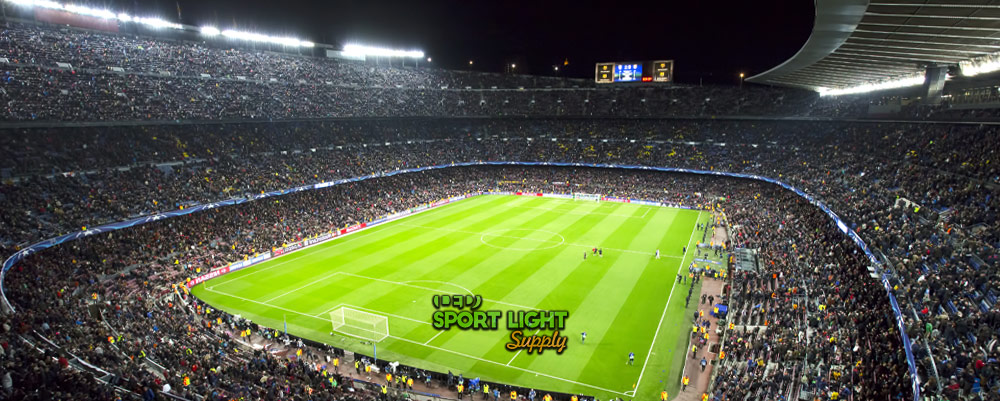
What is the Big Secret?
The Legacy of Tifway 419 Bermudagrass

The secret behind the resurgence of natural grass in sports fields lies in Tifway 419 Bermudagrass, one of the oldest and most reliable grass varieties used for outdoor sports. Since the early 1960s, Tifway 419 has been the industry standard due to its resilience and performance. This grass variety is particularly well-suited to withstand various weather conditions and levels of wear and tear, making it a popular choice for sports fields.
Enhancements Through Cross-Breeding
Despite its durability, natural grass fields can only endure a limited number of playing hours each year. Overuse can lead to wear and tear, resulting in dead patches and damaged turf. To address these challenges, researchers have developed new, more resilient strains of Bermudagrass through selective cross-breeding. These enhanced varieties are better equipped to handle frequent use and recover more quickly, extending the usability of natural grass fields and improving their overall performance.
The advancements in Bermudagrass have made natural grass a more viable option for high-traffic sports fields, combining the traditional benefits of natural turf with modern improvements to meet the demands of contemporary sports.
Why Regional Weather Determines the Type of Grass
Regional weather plays a crucial role in determining the most suitable type of grass for sports fields. Different grasses are adapted to varying climates, which affects their performance and longevity. For sports like football, which commence their season in the fall, grass strains need to handle colder temperatures and specific soil conditions. Conversely, in warmer regions below the 36th latitude, grasses must cope with unpredictable and extreme temperature fluctuations.
Celebration Bermudagrass
Developed in Australia, Celebration Bermudagrass is known for its high resistance to player activity and is ideal for fields with heavy usage. This strain features a distinctive blue-green color and dense, thick blades. It recovers more quickly than Tifway 419 Bermudagrass and is well-suited for regions with limited water availability. Its robust nature makes it a preferred choice for areas where field durability and water efficiency are priorities.
Latitude 36 Bermudagrass
Latitude 36 Bermudagrass, developed at Oklahoma State University, is designed to withstand colder weather conditions. This newer variety combines strains of Bermudagrass that are resistant to low temperatures, making it suitable for regions with mild winters. It provides excellent wear resistance and offers a cushioning effect against hardened winter soil, making it a reliable choice for fields in cooler climates.
Northbridge Bermudagrass
Also developed at Oklahoma State University, Northbridge Bermudagrass is notable for its adaptability to extreme weather changes. This strain maintains its health and performance despite rapid shifts in weather conditions, making it ideal for regions with variable seasonal weather. Its resilience to unpredictable climates ensures that it remains a popular choice for areas with significant seasonal variation.
Best Grass for Football Fields
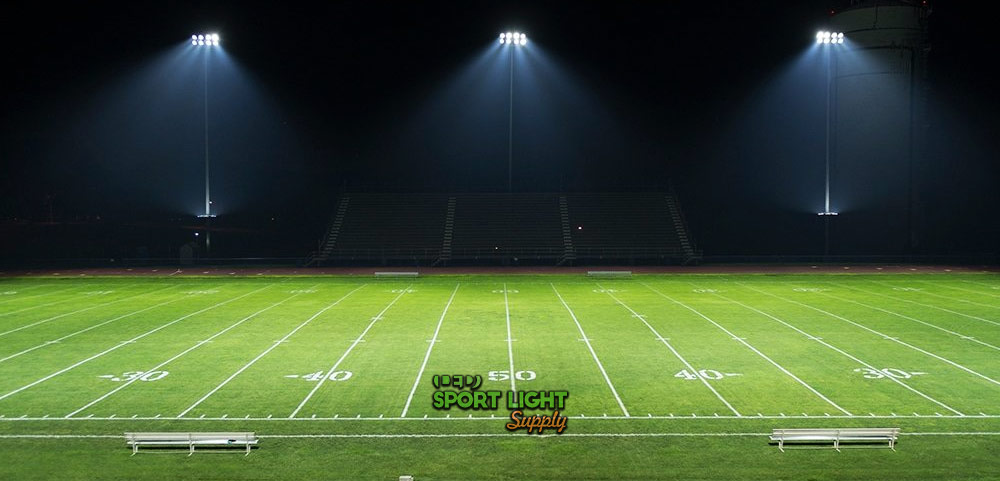
Football fields require durable and resilient grass due to the intense wear and tear from training and games throughout the year. The choice of grass depends on factors such as climate, usage patterns, and maintenance capabilities. Here are some of the best grass options for football fields:
Bermudagrass
Bermudagrass is often the top choice for football fields due to its ability to be mowed short, which helps maintain a smooth playing surface. It thrives in warm climates and can endure heavy foot traffic, making it suitable for fields that see regular use. At the start of the season, Bermudagrass provides a robust foundation for the field.
Overseeding with Perennial Ryegrass
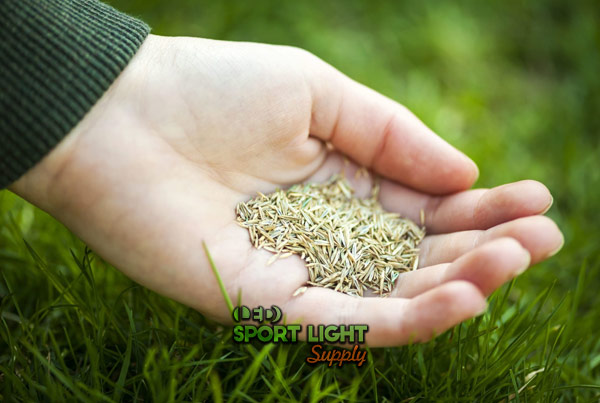
As the football season progresses into fall, many field owners opt to overseed Bermudagrass with Perennial Ryegrass. This technique helps maintain the field’s quality as the weather changes. Perennial Ryegrass seedlings have a lower staining effect compared to Annual Ryegrass, making it a practical choice for maintaining a clean appearance. Overseeding also helps repair worn areas, enhancing the field’s overall durability.
Northbridge and Latitude 36 Bermudagrass
For those looking to invest in newer grass strains, Northbridge and Latitude 36 Bermudagrass are excellent options. Developed to handle both cold and warm temperatures, these strains reduce the need for overseeding as the fall season approaches. They are particularly effective in regions with unpredictable weather, ensuring consistent field quality throughout various weather conditions.
Celebration Bermudagrass
Celebration Bermudagrass is ideal for warmer climates with drier conditions. It is known for its resilience and ability to recover quickly, making it a good choice for fields in areas with extreme heat and limited water resources. This strain maintains a lush appearance and withstands heavy use, though it is best suited for regions with consistent warm weather.
Kentucky Bluegrass
Kentucky Bluegrass is another excellent option, particularly for creating a cushioning effect on the field. Its dense growth forms a thatch layer, providing a softer playing surface that enhances player comfort and reduces injury risk. For quick repairs during the season, overseeding with Perennial Ryegrass is often used alongside Kentucky Bluegrass.
Best Grass for Baseball Fields
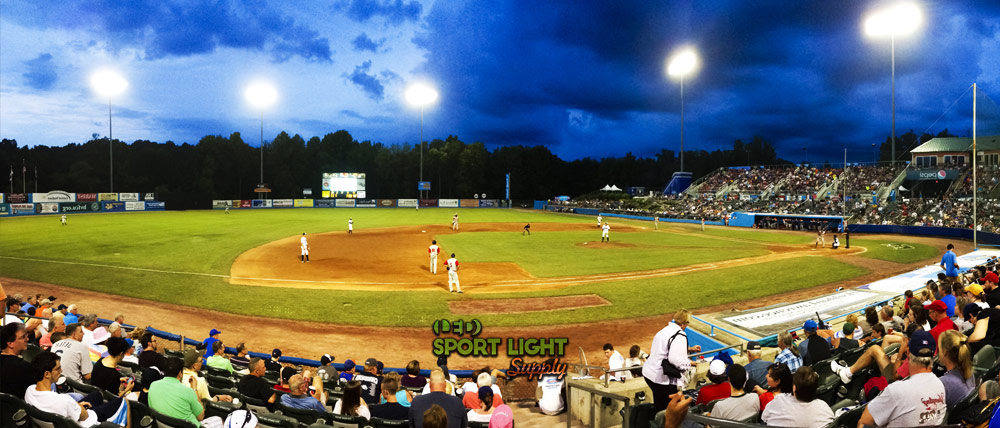
Baseball, with its deep-rooted traditions, often relies on classic grass varieties that combine aesthetics with functionality. Here are some of the top choices for natural grass on baseball fields:
Kentucky Bluegrass
Kentucky Bluegrass is a favorite for baseball fields due to its appealing blue-green color and ease of maintenance. Its dense growth forms a lush, well-groomed surface that is both durable and attractive. The grass blades of Kentucky Bluegrass grow in a way that maintains a neat appearance even after mowing, almost like they have their own natural styling gel.
Bluegrass and Ryegrass Blends
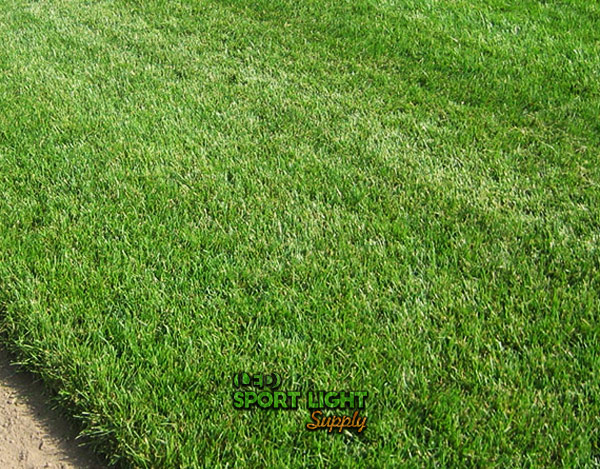
Many baseball fields use a blend of Kentucky Bluegrass and Perennial Ryegrass. The ryegrass seed helps keep uniforms cleaner by reducing staining and contributes to the overall resilience of the turf. These blends are carefully managed to ensure optimal performance throughout the season. Some fields even use proprietary mixtures tailored to specific needs and local conditions.
Bermuda Grass
For baseball fields located in warmer climates, Bermuda Grass is an excellent option. It thrives in hot conditions and has the added advantage of promoting better grip for baseball cleats. Bermuda Grass is known for its ability to regrow new roots, making it a durable choice for fields exposed to intense use and variable weather.
Maintenance and Care
Regardless of the grass type chosen, maintaining a baseball field involves regular upkeep to ensure it remains in optimal condition. Proper trimming and irrigation are key to keeping the grass lush and functional. While baseball fields don’t need to be fortified like a fortress, maintaining a well-kept, green playing surface is essential for both aesthetics and performance.
Best Grass for Soccer Stadiums

Soccer fields require a robust and resilient grass variety to withstand heavy use and varying weather conditions. Here’s an overview of the best grass options for soccer stadiums:
Bermudagrass
Bermudagrass is widely favored for soccer fields due to its durability and adaptability. FIFA’s Quality Concept for soccer fields includes advanced drainage systems beneath the grass, ensuring optimal water management and quick recovery of worn areas. Bermudagrass thrives in warmer climates, making it an excellent choice for maintaining a lush, green field throughout the soccer season.
Blended Mixtures
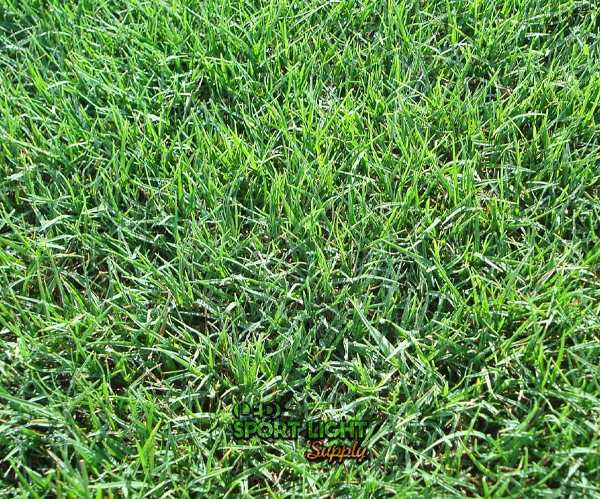
In many soccer fields, Bermudagrass is blended with Tall Fescue to create a thick, resilient thatch. This combination enhances the grass’s ability to handle heavy foot traffic and recover from damage. While this mixture reduces the need for frequent overseeding, some fields still use ryegrass for quick repairs and to maintain a consistent playing surface.
Alternatives for Cooler Climates
For regions with cooler temperatures or significant seasonal shifts, Bermudagrass may not be the best option. In these areas, a mix of Kentucky Bluegrass and Perennial Ryegrass is often used. Kentucky Bluegrass provides a dense, cushioned surface, while Perennial Ryegrass helps with rapid recovery and maintains a clean appearance throughout the season.
Maintenance and Adaptation
Choosing the right grass for a soccer stadium also involves considering maintenance practices and climate adaptability. Bermudagrass and its blends are well-suited for warmer climates, while Kentucky Bluegrass and Perennial Ryegrass are better for cooler regions. Proper irrigation, mowing, and seasonal care are essential to keep the grass in top condition and ensure a high-quality playing experience.
Best Grass for Rugby Fields
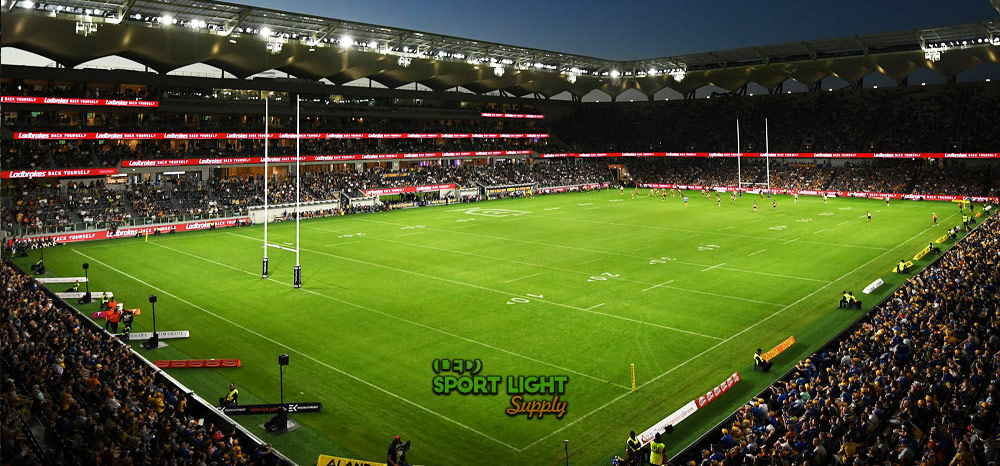
Rugby fields, like those for American football, need to endure heavy foot traffic and varying weather conditions throughout the year. Choosing the right type of grass is crucial for maintaining a durable and high-quality playing surface. Here are the best grass options for rugby fields:
Kentucky Bluegrass
For rugby fields in northern regions, Kentucky Bluegrass is an excellent choice. It provides year-round coverage and can handle significant wear from regular play. However, to maintain its quality and support recovery during the growing season, it is beneficial to overseed with 10-20% Perennial Ryegrass. This blend helps improve the grass’s resilience and keeps the field in optimal condition throughout the year.
Bermudagrass
In southern regions with warmer climates, Bermudagrass is a suitable option for rugby fields. It thrives in hot conditions and provides a robust playing surface. Similar to Kentucky Bluegrass, Bermudagrass also benefits from overseeding with Perennial Ryegrass. This practice helps address wear and tear and ensures the field remains in good shape throughout the year, especially during the cooler months when Bermudagrass may slow its growth.
Grass Selection and Maintenance
Both Kentucky Bluegrass and Bermudagrass are well-suited for rugby fields due to their durability and ability to handle regular activity. Rugby players, while active, generally place less stress on the field compared to football players, but the grass still needs to be resilient. Regular maintenance, including overseeding with Perennial Ryegrass, helps keep the field in top condition and supports quick recovery from heavy use.
Best Grass for Tennis Courts
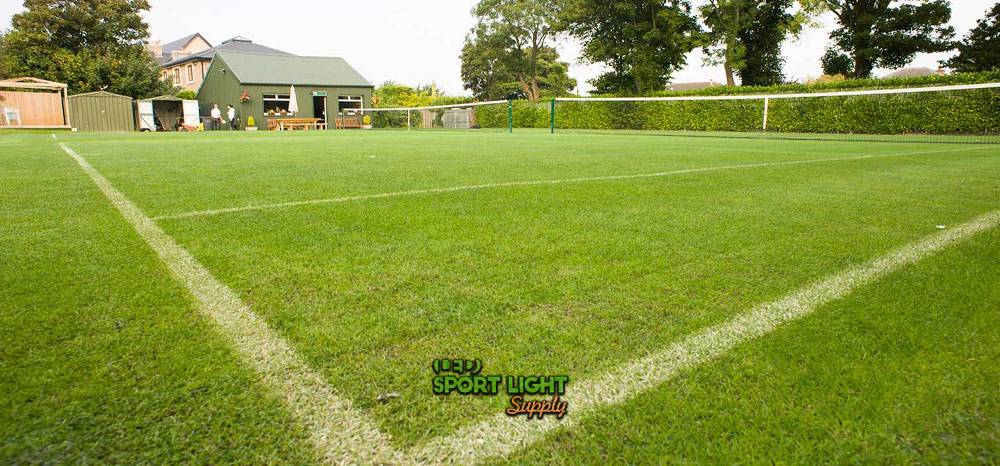
Tennis courts, especially those with natural grass surfaces, require specific grass types to ensure optimal playability and maintenance. Here’s an overview of the best grass options for tennis courts:
Grass Varieties for Northern Climates
In northern climates, such as those used at Wimbledon, tennis courts typically use a blend of grass types to achieve the desired playing conditions. The common mix is approximately 70% Perennial Ryegrass and 30% Creeping Red Fescue. This combination offers a dense, hard surface that provides a good bounce for the tennis ball and withstands heavy play.
Perennial Ryegrass
Known for its quick germination and robust growth, Perennial Ryegrass helps establish a solid playing surface.
Creeping Red Fescue
This grass type is used for its fine texture and ability to form a dense mat, complementing the Perennial Ryegrass.
Maintaining a grass height of no more than one-quarter inch is essential to keep the playing surface consistent and ensure that the ball bounces correctly. Some groundskeepers prefer using pure Perennial Ryegrass or pure Creeping Red Fescue, but the blend is widely accepted for its balance of durability and playability.
Grass Varieties for Southern Climates
In southern regions, Bermudagrass is a popular choice for tennis courts due to its ability to thrive in warm climates. Bermudagrass provides a resilient surface that can handle the demands of regular play if properly maintained.
Bermudagrass
Ideal for warmer areas, Bermudagrass needs to be kept well-trimmed and supported by an efficient irrigation system to maintain its quality. It offers a consistent playing surface and can adapt to the local climate conditions.
Maintenance Considerations
Regardless of the grass type used, maintaining a tennis court involves regular mowing, irrigation, and care to ensure a flat, well-maintained surface. The choice of grass should align with the local climate and playing conditions to provide the best performance and longevity for the court.
Best Grass for Field Hockey
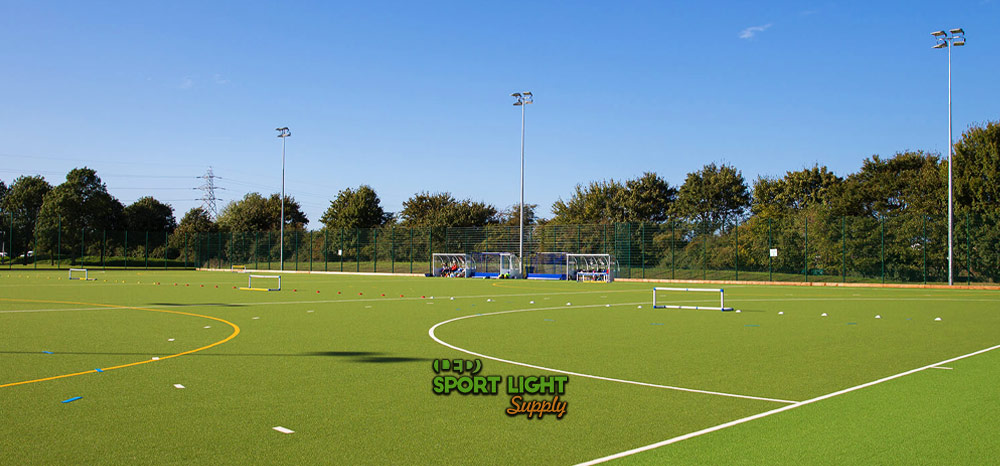
Field hockey requires a well-maintained playing surface that can handle intense play and varying weather conditions. Here’s a guide to the best natural grass options for field hockey fields:
Kikuyu Grass
Known for its vigorous growth and ability to form a dense mat, Kikuyu Grass is highly resistant to drought and wear. It establishes a firm playing surface that is ideal for field hockey.
Couch Grass
Often used in combination with Kikuyu, Couch Grass also provides a robust and resilient surface. It supports strong root development both above and below the ground, contributing to a durable field.
These grass types can take up to a year to fully cultivate and develop a consistent, firm density suitable for field hockey.
Seasonal Care and Maintenance
Maintaining natural grass for field hockey involves careful management of seasonal changes. In warmer weather, Kikuyu and Couch grass thrive, but during cooler months, overseeding is necessary to preserve the playing field. This typically involves introducing grass varieties that can handle lower temperatures and reduced activity. However, this maintenance can be costly and requires significant effort, which is why many field hockey fields opt for artificial turf instead.
Considerations for Artificial Turf
Given the high maintenance costs and the need for seasonal overseeding with natural grass, many field hockey venues use artificial turf. Artificial surfaces offer consistent playing conditions year-round, require less maintenance, and are more cost-effective in the long run.
Why Natural Grass is Better for Field Sports
Playing on natural grass offers several advantages for field sports that enhance both performance and experience. Here’s why natural grass often surpasses artificial surfaces:
Superior Grip and Bounce
Natural grass provides excellent grip due to the way grass blades grow and interlock. Properly maintained and trimmed grass offers a stable and predictable playing surface. In dry conditions, grass fields allow athletes to move more confidently and take advantage of the natural bounce, which can be less jarring than artificial surfaces if a player falls. This natural cushioning helps reduce the risk of injury and provides a more comfortable playing experience.
Enhanced Athlete Experience
The sensory experience of natural grass is unmatched. The fresh smell of grass and its natural aesthetic contribute to a pleasant playing environment. The production of oxygen by grass can improve focus and reduce stress for athletes. This can lead to increased activity levels and enhanced performance, as players benefit from a more comfortable and less stressful environment.
Improved Oxygen Levels
Natural grass fields help maintain better air quality by producing oxygen and absorbing carbon dioxide. This is especially beneficial for athletes who need ample oxygen for endurance and performance. The fresh air provided by natural grass supports better breathing and can enhance physical exertion, something artificial turf cannot replicate unless equipped with specialized ventilation systems.
Reduced Muscle Tension
The natural environment of grass fields helps players experience less stress and reduced muscle tension. This relaxation effect can lead to more effective movement and less physical strain during games. Players are less likely to be distracted by discomfort or stress, allowing them to perform at their best.
Conclusion
Natural grass fields offer distinct advantages for field sports, from superior grip and bounce to enhanced player experience. The natural properties of grass provide a more stable and predictable surface that can help reduce injuries and improve performance. The fresh scent, better air quality, and reduced muscle tension associated with natural grass contribute to a more pleasant and effective playing environment.
While artificial turf may offer practical benefits such as lower maintenance and year-round usability, it lacks the inherent qualities of natural grass that support athletic performance and well-being. The natural advantages of grass, including its ability to produce oxygen and create a comfortable playing surface, make it a compelling choice for many sports venues. Ultimately, natural grass remains a preferred option for those seeking a holistic and performance-enhancing playing experience.
